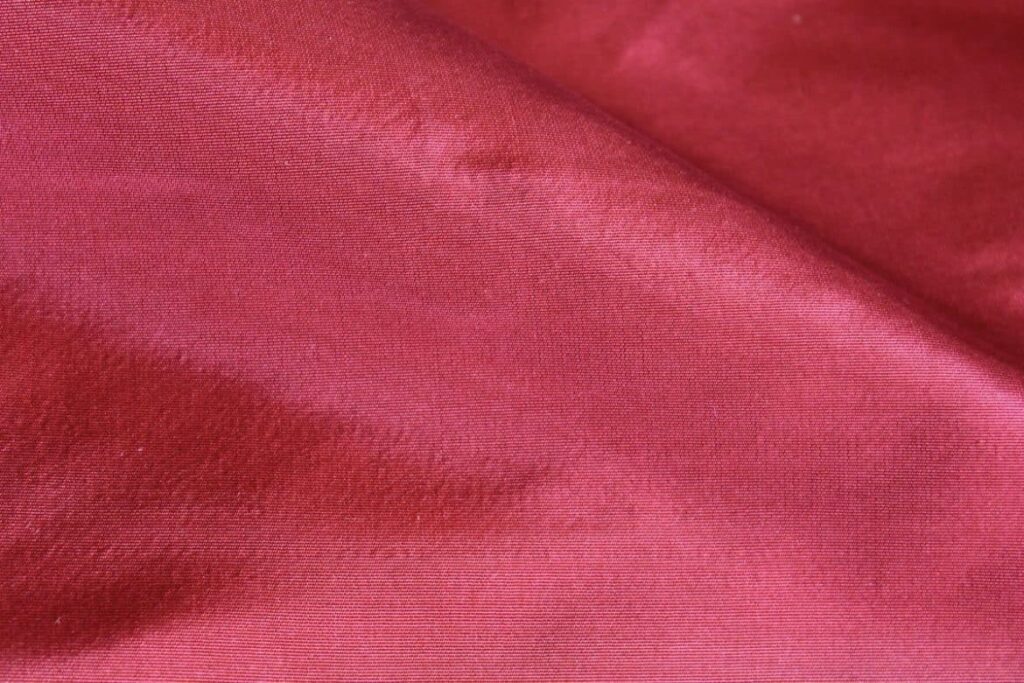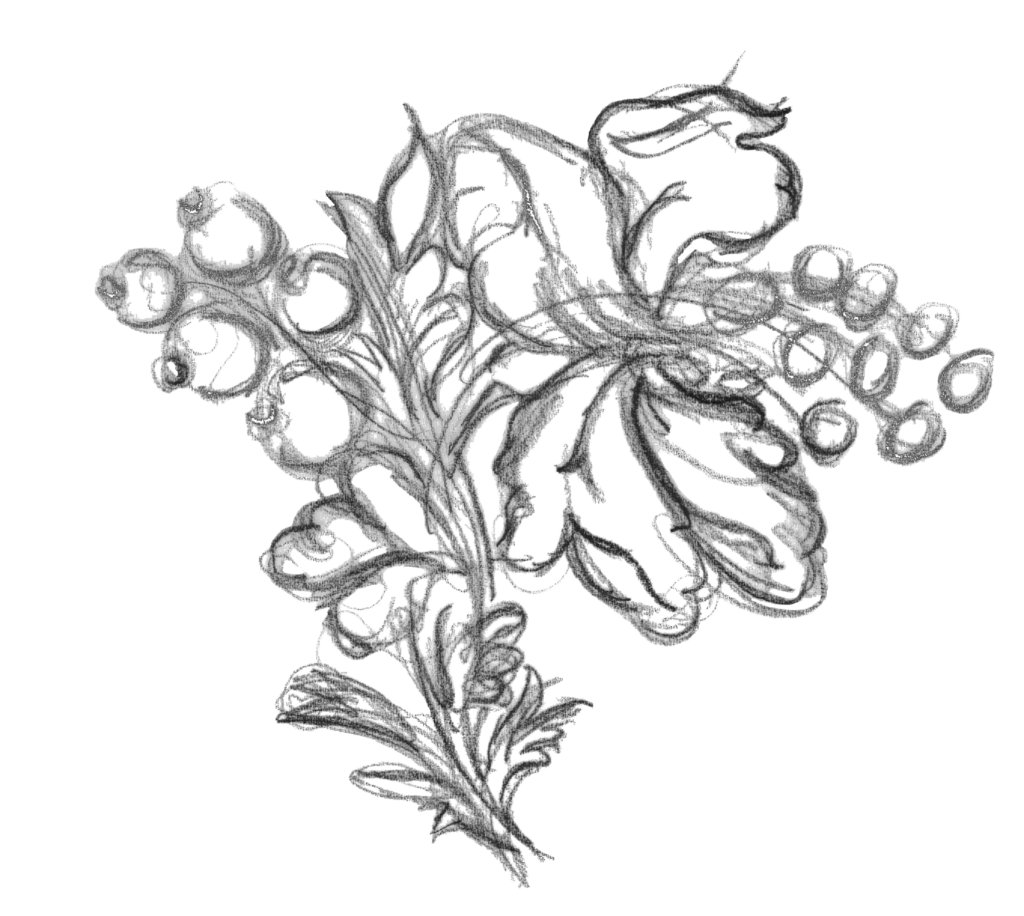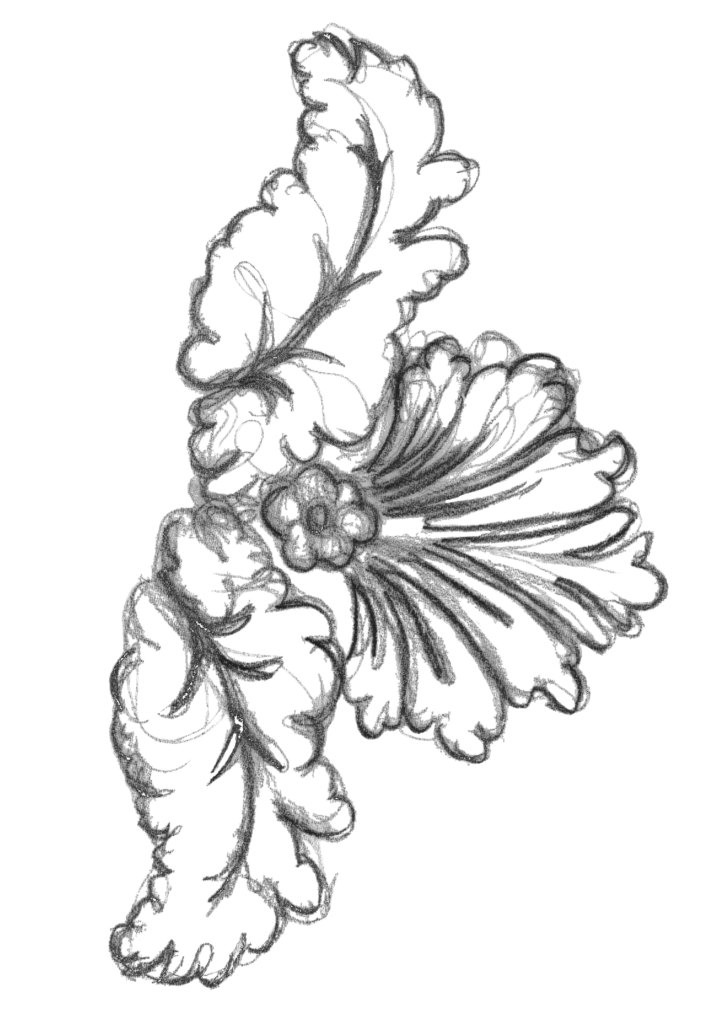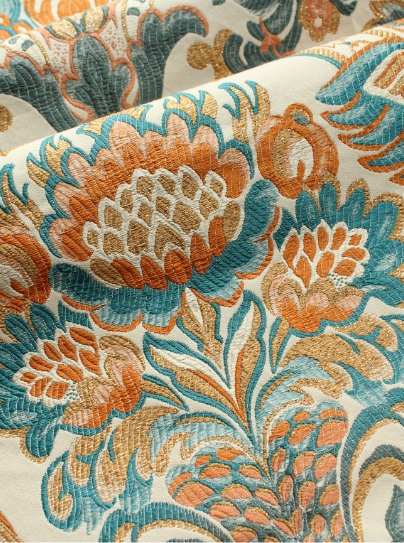From banner silk to lustring, super shiny silks are often desired for luxury linings in window and bed drapes, decorative plain cloths and as a rich base for intricate hand embroidery. Here we explore the differences between these fine plain silk qualities.
You may also be interested to read our article on ‘Trooping of the Colour’
When it comes to weaving fine silks of a plain nature Sarsnets and Lustrings lead the way from the mid-15th Century onward. The plain weave construction of both types of cloth produced a tight interlocking structure finely created from the thinnest of gossamer silk threads. In developing our own Sarsnet weave we first researched early textile fragments from Schloss Ehrenburg in Saxe-Coburg Germany. It revealed a square construction of organzine being used so finely it created an almost transparent cloth. In hand weaving to achieve this delicate structure the weaver must be neither too firm, nor inconsistent in the beat-up of the cloth. Uneven beating creates horizontal bars, which in window drapery would be fully revealed. Today the cloth would be described as a “paper taffeta” and its beauty is revealed when draped in large swag and tail window treatments.
Lustring is also a finely woven style of taffeta but plain with no slubs to be seen. With an organzine warp and tram weft in pure silk the delicate sheen that is reflected from the surface has always been favoured for luxury linings in window and bed drapes, but also for some furniture chair linings. Lustrings or Lutestrings are often referred to in house records and inventories but amount to the same cloth and texture. In the 18th and 19th Century Lustrings were “polished “ during the weaving process with the use of a cloth polisher which was a rounded smooth steel blade set in a wooden handle. By rubbing the surface with the steel edge employed, additional sheen could be achieved by flattening out the silk weave structure.
Lute is also referred to as Lutestrings in some records but here again the fabrics appearance is a plain cloth face but a slightly more pronounced fine horizontal rib in the surface. This is achieved by increasing the density of the organzine warp threads which tightly covers the weft threads of the structure. Lute would have been used where a plain face (or decorative) cloth was desired, for example in the festoon window drapes to be seen at the V&A Museum in the two British Galleries exhibits, No 11 Henrietta Street and for the silk linings of the Garrick Bed where the interior lining was as important as the cotton block print exterior fabric.
Where a more heavy weight, plain silk a cloth is required “banner silk” may be desirable. Also woven in plain weave construction the warp ends are tightly compacted together to form a strong tight structure which is often specified for use as banners and flags for ceremonial use. This banner silk is a very difficult fabric to weave perfectly, as the eye is drawn to any minute blemish on the surface. The structure is favoured by embroiderers applying silk thread to the surface images is required, without distorting the lay of the cloth, as seen in the Queen’s Birthday Parade when the Regimental Colours are presented.
You can see more images of banner silk and other fabrics mentioned in this article by visiting the ‘Our Fabrics’ gallery or alternatively learn more about the structure of the woven fabric. You can also keep up to date with our recent projects by following our Instagram page: @humphriesweaving








